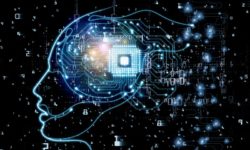Are we closer to unlocking the secrets of evolution and perhaps extinction?
Introduction
The feasibility of framing and formulating the singularity of nature has proved impossible to accomplish scientifically so far. The reason behind that is it was difficult to connect and merge biology with physics. However, with the newfound realization that biology can be ultimately traced to its very origin by merely reducing evolutionary biology to cell-cell signaling, the role physics plays in biology is finally crumbling the obstructions to the evolution of science.
The emerging understanding of the reduction of biology to cellular networks uniquely gains a grip on the role of quantum mechanics and helps us explore the future of quantum biology. Furthermore, it allows us to empirically formulate the basis for the singularity of nature for the very first time. Moreover, as we explore the cosmological continuum from Physics to Consciousness, applying category theory to evolutionary biology will likely help us frame and formulate the evolutionary impact of emerging technology, and further help us understand how man, machine, matter, mother nature, and the universe are all connected.
Acknowledging this emerging reality, Risk Group initiated a much-needed discussion on The Singularity of Nature with Prof. (Dr.) John S. Torday, M.D. from UCLA based in the USA on Risk Roundup.
Risk Group discusses The Singularity of Nature with Prof. (Dr.) John S. Torday, M.D., a Developmental Physiologist from UCLA and Author of Evolutionary Biology, Cell-Cell Communication and Complex Disease based in the United States, with a keen interest in how and why Physiology has evolved.
Cosmological Continuum
The Cosmological Continuum From Physics to Consciousness states that “The Big Bang of the Singularity” gave rise to both the physical and biological spaces. Quantum physics and quantum biology further explain that the reduction of developmental biology to self-referential cell-cell communication offers us a gateway for understanding some fundamental mechanisms of physiology.
In the paper, Singularity of Nature, Prof. (Dr.) John S. Torday explains the difficulties in the feasibility of formulating the singularity of nature up until now. Since it is believed that the cosmos resulted from a massive explosion of the ‘Singularity’ that gave rise to the physical realm, the physical space seemingly provided the substrate for biology. Now since both the physical and biological domains are believed to be mini-singularities authored by the Big Bang, is it not essential to understand whether there is a valid pathway for quantum evolutionary development through cell-cell interactions? This is especially relevant when scientists may have discovered a star that is perhaps older than the universe itself. That brings us to an important question: how will this discovery impact our current understanding of science? Will the theory of the Big Bang hold up?
Provided that the Big Bang theory is indeed correct, this fundamentally changes our views about not only evolution but also how environmental changes in the human ecosystem of cyberspace, aquaspace, geospace, and space (CAGS) play a role in the evolutionary biology process. This is more important than ever as we go through a technological tsunami that rapidly changes CAGS.
Over the years, we have leaned on the gene mutation theory as the cause of evolution, and cell biology was never even considered as a basis of evolutionary theory. Because the focus has always been on random genetic mutations, epigenetic mechanisms were seldom weighed. However, according to Torday and Rehan, consequential and heritable epigenetic mechanisms have now been authenticated. Moreover, they are based on the effects of physiologic stress-causing internal selection.
As evolutionary changes have been directly attached to documented chronological geophysical changes in the environment, it is essential to re-evaluate the internal and external cellular processes involved in evolution considering the human ecosystem science and interconnected processes of today. Needless to say, the reduction of vertebrate evolution to the cellular-molecular level offers the much-needed opportunity to systematically interface biology with the physical environment.
Quantum Processes
It is well-documented that life on earth has been dependent on quantum processes since its earliest beginnings. All living systems are made up of molecules, and fundamentally all particles are defined by quantum mechanics. Quantum biology’s coherence and entanglement principles have been revealed to be the actual neural operating means of many bacteria. This continuous integration of quantum mechanics between the physical and biological space eliminates the hollow disparity between the ultimate triggers of evolution, reducing the entire evolutionary process to one continuum. Also, it advances us the opportunity to understand the underlying cellular-molecular mechanisms. Since all biology is quantum mechanical, this would help us understand the dependencies on possible superpositions in a quantum system where time is a dependent variable. Quantum theory can contribute to a scientific understanding of living systems.
Evolutionary Biology
Biological systems always exchange energy and matter from their environment. According to Torday et al., the beginning of life on Earth is thought to have been intermediated by lipids immersed in the primordial oceans, spontaneously forming micelles, as prototypical cells that distinguished the internal from the external environment.
The smallest functional unit of biology is the cell. Since life is dependent on information that is communicated between the cell and its environment (both external and internal), or between cells, there is a need to understand quantum biology from an evolutionary perspective. As quantum effects on cell biology are now well recognized, it is crucial to understand what evolutionary impact will be caused by emerging technologies and increased exposure to the human-made electromagnetic spectrum.
Cellular communication is a widespread phenomenon observed in nature. When the cell is seen as the origin of niche construction, internalizing the external environment, biology interacting with the ever-changing external environment needs to be understood further from an evolutionary perspective. As seen, the sources of cell-cell communication, information, are either changing, getting compromised, or being manipulated due to the ever-changing external environment. It is this diverse condition that powers evolution, continuously trying to resolve the external problems that are presented to the living cell which is habituated to its ambiguous state.
Technology Impact on Human Evolution
Now, if we reduce the development and phylogenetic history of the organism to cellular-molecular common denominators against emerging technologies and the backdrop of global environmental epochs, the causal relationships for evolutionary biology change can be finally understood. There is a need to have a structured study to understand how emerging technologies like 5G, smart dust, gene editing, and more are re-shaping the human ecosystem and how it will, in turn, re-shape the external environment of cells and drive evolutionary biology further.
It is a known fact that environmental toxins play a role in the development of many human diseases. Moreover, many of these health changes seen are transgenerational. When epigenetic agents can cause chemical changes in the DNA (transcription, methylation, ribosylation, ubiquitination, and more), it induces the same marks in the germline cells-sperms and eggs. So, what we do today, knowingly or unknowingly, to our human ecosystem in cyberspace, aquaspace, geospace, and space will impact our cell biology, and the effect will be transferred from one generation to the next. That brings us to an important question: how will smart dust and a human-made electromagnetic spectrum impact human life at the cellular level?
Applying Category Theory to Singularity of Nature
It is crucial to formulate emerging technology’s impact on evolutionary biology using relational mathematics tools such as category theory. Is it possible to apply category theory as a formal model theory to understand cell-cell signaling applications and to understand patterns of evolution or extinction? Is it possible to study the impact of human-made electromagnetic spectrum overload (5G etc.) on human life and evolution? Is it possible to study the effect of emerging technologies like smart dust and more from an evolutionary perspective? These are all critical questions.
Category theory is already being used as a universal modeling tool to resolve complex problems in physics, engineering, and more. It is time we apply it to evolutionary biology to further understand complex evolutionary processes such as understanding the whole system behavior of organisms to understanding what defines the development of traits. It seems we are closer to unlocking the secrets of evolution and, perhaps, extinction.
What Next?
The quantum world is a radically interconnected and interdependent ecosystem, where every unit, from elementary particle to galaxy, man, machine, matter, and mother nature evolves like a living organism.
Viewing evolutionary biology (beginning with the unicell) through the lens of physiology can be further understood logically using category theory. By understanding how changes happen at the cellular level due to the external environment, we can better realize how we will evolve into the greater scheme of nature as technology transforms the human ecosystem in cyberspace, aquaspace, geospace, and space (CAGS).
NEVER MISS ANY OF DR. PANDYA’S POSTS
Join here for a regular update.





 Emerging Technology For Cyber Warfare
Emerging Technology For Cyber Warfare